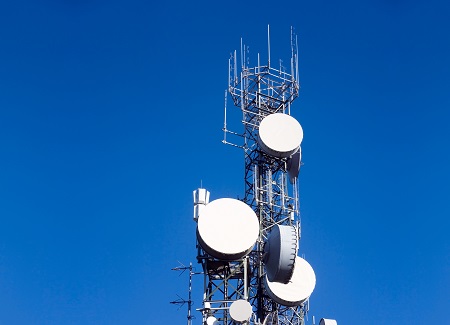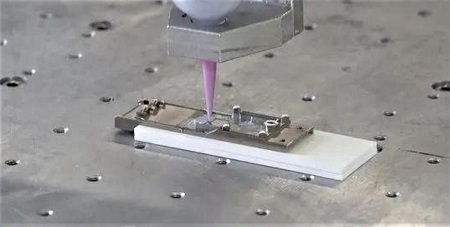The launch of the 5G network has created multiple challenges to the service providers. As the COVID-19 pandemic forces restrictions on the movement of people, the need for improved, reliable and fast telecommunication services becomes urgent. Technology research company Omdia cited some trends in the telecommunications industry in 2021 with 5G deployment being the leading trend. In its report, Omdia estimates 5G to reach mass market readiness in 2021 with projected 553 million subscribers globally.
In the midst of these developments in 5G networking, various innovations in high-performance polymers for 5G are being launched. SABIC has introduced its growing portfolio of materials for 5G base stations, terminals and mobile devices. Dow also unveils a thermal gel for 5G technology that promotes environmental sustainability and efficient assembly. Clariant’s phosphorus-based flame retardants (FR) have the right properties ideal for high-speed, high-frequency PCBs.
Materials for 5G base stations
SABIC introduced its portfolio of high-performance materials for 5G base stations, terminals and mobile devices. The company’s specialised materials including LNP™ compounds and copolymers, ULTEM™ resin, and NORYL™ resins and oligomers aim to address major industry challenges such as improving heat management and radio frequency (RF) performance, reducing weight and cost and raising production yields. The LNP compounds and copolymers can help engineers improve active antenna unit (AAU) design and performance with customised dielectric constant and dissipation factor (Dk/Df) performance and superior weather resistance. NORYL resins, based on polyphenylene ether, deliver very low specific gravity, non-brominated/non-chlorinated flame retardance, hydrolytic and dimensional stability, chemical resistance to acids and bases, and excellent dielectric performance. NORYL resins are already used in many 5G applications, including full-frequency GPS antennas, microwave antenna reflectors, cooling fans in base band units (BBUs) and mmWave radomes.
Further, SABIC’s ULTEM resins feature a combination of properties: excellent dimensional stability, infrared (IR) transparency, stable Dk and low Df over a wide temperature range, and metallization capability. Applications for these polyetherimide (PEI) resins in 5G components include fibre optic connectors and lenses, RF connectors, board-to-board connectors and RF filter components. In surface mount technology (SMT) assembly, ULTEM resins with low coefficient of thermal expansion (CTE) can be used for connectors and cavity RF filters. Finally, NORYL oligomers help formulators produce high-speed copper clad laminates that enable multi-layer printed circuit board designs with ultra-low insertion loss. SABIC’s specialty dianhydrides offer polyimide film manufacturers a unique combination of properties including improved dielectric performance and improved copper adhesion.

SABIC’s specialised materials for 5G base stations, terminals and mobile devices include LNP™ compounds and copolymers, ULTEM™ resin, and NORYL™ resins and oligomers.
Thermal gel for efficient and sustainable assembly
Dow introduced DOWSIL™ TC-3065 Thermal Gel, a one-part, thermally conductive gel developed to dissipate high amounts of heat away from sensitive electronic components. DOWSIL™ TC-3065 Thermal Gel easily fills gaps due to its excellent wetting ability and can replace fabricated elastomeric thermal pads that may fail to protect electronics from the high heat associated with 5G’s greater power densities. After full curing, Dow’s new thermal gel eliminates silicone oil bleeding and has ultra-low levels of volatile organic compounds (VOCs). To achieve high levels of manufacturing efficiency, DOWSIL™ TC-3065 Thermal Gel supports automatic dispensing and heat curing after assembly. Applications for this innovative new material include telecommunications and data communications equipment. DOWSIL™ TC-3065 Thermal Gel can be used for optical transceivers, ethernet switches and routers, high-speed solid-state disks (SSD) and other network devices. This strong new addition to Dow’s growing portfolio of thermally conductive silicones can help drive the development of next-generation applications in a way that is both efficient and environmentally responsible.

New thermal gel from Dow supports automatic dispensing
DOWSIL™ TC-3065 Thermal Gel is a soft, stress relieving and shock damping silicone gel with a thermal conductivity of 6.5W/mk. It has an excellent extrusion rate (60 g/m) and supports auto-dispensing. DOWSIL™ TC-3065 Gel resists slumping during vertical assembly and completely fills uneven spacing. This dispensable material accommodates higher part-to-part tolerances that can challenge fabricated thermal pads with their constrained dimensions. It is supplied as a non-flowable gel and supports a bond line thickness as thin as 150 microns when high pressure is applied. DOWSIL™ TC-3065 Thermal Gel can be dispensed onto substrates such as aluminium heat sinks and encapsulated chips that have an epoxy surface. After assembly it can achieve complete curing by applying 100°C for 30 minutes (or 80°C for 60 minutes) or from the heat generated by the component. If rework is required, DOWSIL™ TC-3065 Thermal Gel can be removed completely without leaving behind a residue after curing. At room temperature the working time or open time is generally five days, which helps reduce scrap rates during electronic assembly.
DOWSIL™ TC-3065 Thermal Gel balances adhesion with re-workability to support advanced technologies that require reliable performance. Unlike some thermally conductive elastomeric pads, this new gel will not bleed silicone oil after full curing, which helps to avoid contamination of device surfaces that can degrade performance. DOWSIL™ TC-3065 Thermal Gel is resistant to humidity and other harsh environments and will not crack during long-term aging.
Giving better fire safety to the 5G revolution
The components the 5G revolution literally rests on are printed circuit boards, or PCBs - thin sheets with metal traces and mounted circuits for transmitting radio signals. To implement the new standard, these PCBs must be installed in countless new base stations and devices, and to support the high speeds and frequencies 5G uses, they must perform even better than before. This includes how well they relay signals and resist to heat and moisture - and it also includes Clariant's specialty, balancing all this with reliable and sustainable fire safety.
The PCB board usually consists of copper-clad laminate, or CCL - a lasagna-like arrangement often featuring multiple layers of insulating material riddled with copper traces for conducting currents and signals. The non-conductive layers are made of epoxy resin or other suitable plastics, some of them reinforced with paper or glass fibre, and the properties these seemingly unimportant layers of the PCB lasagna have are actually very vital. This already starts during manufacture, when the components are soldered on. The heat involved can be quite high, especially when lead-free soldering is used, as required by the EU's Directive on the Restriction of Hazardous Substances Directive (RoHS). The relevant PCB parameter here is their glass transition temperature, or Tg, which indicates at what point their rigid resin layers become rubbery and soft. The Tg is also important when PCBs are used in hot environments, as for instance in cars or oil drills, and high heat resistance is generally desirable in the higher 5G operating temperatures. Low water absorption is also a plus, as it wards off corrosion of the fine metal traces.

Clariant's FR from the Exolit® OP and Exolit EP lines have all the
right characteristics to meet 5G standards.
Another crucial aspect which heat, moisture and frequency all play into are the electrical properties of the insulating materials. The key performance parameters of the non-conductive layers here are dielectric constant (Dk) and dissipation factor (Df), which both must be kept low to minimize transmission loss and delay. This also reduces loss of power and electromagnetic "crosstalk" between the fine copper traces - ensuring 5G users smooth high-speed communication and tranquil enjoyment of hyper-low latency and real-time apps.
Clariant's phosphorus-based flame retardants (FR) from the Exolit® OP and Exolit EP lines have all the right characteristics for supporting these properties in high-speed, high-frequency PCBs and making the 5G standard a reality. Available both as liquid processable product (Exolit EP) and very fine powders (Exolit OP), their high content of phosphorus, which can also be synergized with other flame retardants, gives them high efficiency at low doses. With their high thermal stability, they are suitable for lead-free assembly and packaging of electronics, and able to "stand the heat" when 5G transmission runs hot. They are also highly hydrophobic, meaning they are not easily dissolved by water or increase its absorption. Exolit OP products neither significantly impact the Tg nor the Dk and Df of the final product, and even at a frequency of 10 gigahertz, a final dissipation factor of only 0.006 can be achieved. Just as importantly, the halogen-free solutions need to comply with RoHS regulations for flame retardants in electronics, and are a particularly sustainable choice.














